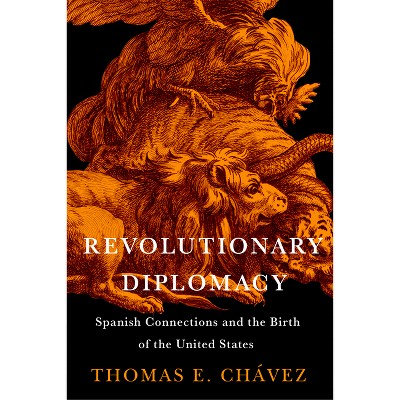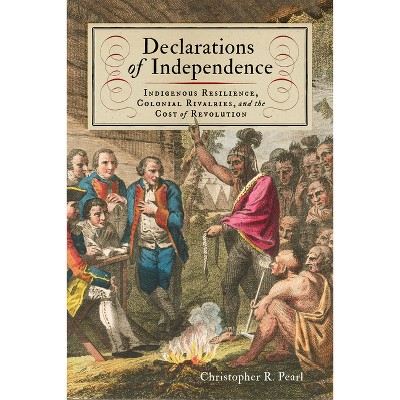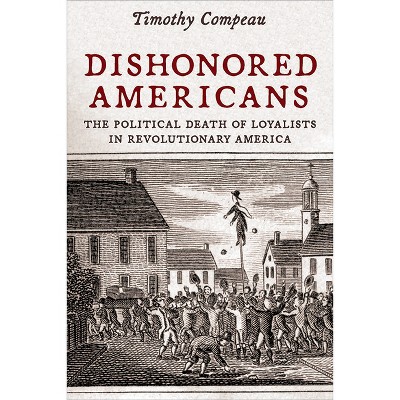The American Liberty Pole - (The Revolutionary Age) by Shira Lurie

About this item
Highlights
- During the American Revolution and into the early republic, Americans fought with one another over the kinds of political expression and activity that independence legitimized.
- About the Author: Shira Lurie is Assistant Professor of History at Saint Mary's University.
- 240 Pages
- History, United States
- Series Name: The Revolutionary Age
Description
About the Book
"This book is explores the deployment of liberty poles in the United States from the Revolution through the Civil War"--Book Synopsis
During the American Revolution and into the early republic, Americans fought with one another over the kinds of political expression and activity that independence legitimized. Liberty poles--tall wooden poles bearing political flags and signs--were a central fixture of the popular debates of the late eighteenth century. Revolutionary patriots had raised liberty poles to symbolize their resistance to British rule. In response, redcoats often tore them down, sparking conflicts with patriot pole-raisers.
In the 1790s, grassroots Republicans revived the practice of raising liberty poles, casting the Washington and Adams administrations as monarchists and tyrants. Echoing the British response, Federalist supporters of the government destroyed the poles, leading to vicious confrontations between the two sides in person, in print, and at the ballot box. This elegantly written book is the first comprehensive study of this revealing phenomenon, highlighting the influence of ordinary citizens on the development of American political culture. Shira Lurie demonstrates how, in raising and destroying liberty poles, Americans put into practice the types of popular participation they envisioned in the new republic.
Review Quotes
In The American Liberty Pole, Shira Lurie vividly depicts the combative ceremonies of the liberty pole, as both a lived experience and an arena to contest the meaning of liberty and who counts as an American citizen. This book contributes to our understanding of early America, but more importantly, it demonstrates that protest has played a critical role in the American story from the beginning.
--Lindsay M. Chervinsky, author of The Cabinet: George Washington and the Creation of an American InstitutionLurie effectively situates liberty poles at the heart of the debate over the nature of republican government, whether politics out-of-doors - so important to British and Anglo-American political culture under a monarch - remained acceptable once the government was in the hands of representatives of the people. She highlights their centrality in a period of political transition and cultural formation and traces their striking evolution across a long period of time. The book is an admirable treatment.
--Eric A. Hinderaker, University of Utah, author of Boston's MassacreThe liberty pole is one of those features of early American political culture that every historian knows about, but until now no one has offered a compelling interpretation of what they meant to those who erected them, and what they can tell us about the broader politics of the founding era. Lurie's book enables us to see these liberty poles as far more than quaint relics from an era gone by, but rather as a key site at which a wide range of Americans thought, fought, and put into practice what it might mean to live in an aspirationally democratic republic.
--Seth Cotlar, Willamette University, author of Tom Paine's America: The Rise and Fall of Transatlantic Radicalism in the Early RepublicFor its clarity of argument and deft, concise illumination of some of the central problems of popular sovereignty, this book will make a valuable addition to undergraduate syllabi in political history. It will also help scholars in the field to reconsider traditional narratives about the development of electoral democracy.--Register of the Kentucky Historical Society
In clear and inviting prose, Lurie picks up the full weight of the scholarly tradition on early American political culture and distills it into a carefully researched narrative history of the liberty pole in the early Republic, with a special focus on the 1790s. Her argument shows us that there was no consensus of national identity and shared meaning at the founding that came apart in moments of crisis later, be they in the nineteenth century or the twenty-first. Rather, Americans have hotly contested their politics and tied their political identifications to the symbolic authority of the nation's history from the beginning. The story of American political culture is the story of protest, contestation, and changing markers; it was that way from the beginning, and if Lurie is right, the liberty pole as a tool of opposition political symbolism was a founding element in that story. This book leaves little doubt that she is . . . The book is well-written and accessible, and it could be well-used for scholarly edification and undergraduate instruction alike. . . . Overall, this is a very impressive book, and if it can redirect some scholarly energy toward a constructive history of the promise of American participatory democracy, maybe even encourage some democracy itself, we might all be better off.--The American Historical Review
Its brevity, its synthetic nature, and Lurie's engaging writing style make this book an excellent introduction to the popular politics of the early republic that is accessible to nonacademic readers and eminently assignable in undergraduate courses.--William & Mary Quarterly
Overall, The American Liberty Pole provides a novel perspective on the development of early American political culture, and Lurie has done an excellent job at threading the needle between advancing an argument and telling a compelling story. I look forward to assigning it in future classes.--H-Early-America
About the Author
Shira Lurie is Assistant Professor of History at Saint Mary's University.
Shipping details
Return details
Trending Non-Fiction











